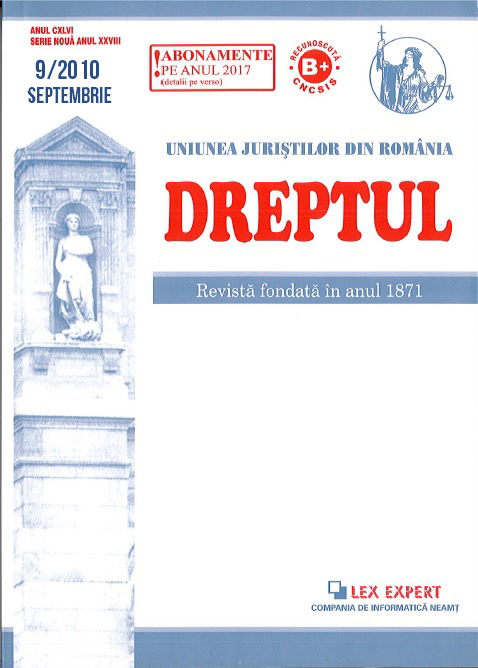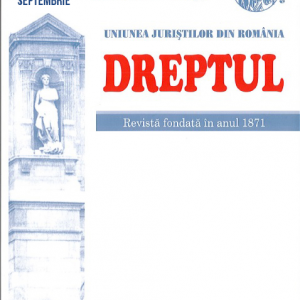Guilt is that psychic attitude of the active subject, who – voluntarily committing an act provided by the criminal law, anti-juridical and imputable – is aware of the objective circumstances in which he externalizes his conduct or, although he does not have this conscience, should and could have it. Guilt is separate from the foresight of the criminal law and covers the subjective elements of the content of the crime.
The structure of guilt includes two psychic processes, which are called factors thereof. The first is conscience or the intellective factor, and the second is the will or the volitional factor. The conscience deliberates on the deed and decides whether it will be committed. The will mobilizes the energy necessary for the implementation of the decision taken.
The forms and modalities of guilt are defined by relating the conscience and the will to the objective circumstances. Intellectively, what relates to objective circumstances is the presence or absence of conscience. Volitionally, what relates to objective circumstances is the content of the will.
Conscience can be present and objective circumstances can be represented correctly, when there is intent, direct or indirect. Conscience may be present, but objective circumstances may be
misrepresented when there is premeditated guilt. Conscience may be absent when – in the presence of the obligation and of the possibility of predicting objective circumstances – there is guilt without foresight. Direct intent, indirect intent, and premeditated guilt are defined by the foresight of the objective circumstances. The direct intent is defined by pursuing the result, the indirect intent is defined by accepting the result, and the guilt with foresight is defined by rejecting the result. Guilt without foresight is defined by the failure to foresee the objective circumstances and by the obligation and the possibility to foresee them.
The classification of the intent in direct and indirect is made according to the way of reporting the will to the result of the crime. The intent is direct, if the active subject pursues the result of the crime. According to the way in which the active subject prefigures the result of the crime, the direct intent has two degrees of intensity. Each degree in its turn has two stages. The active subject prefigures the result of the crime as an end in itself (the first stage of the first degree), as a necessary means to achieve another goal (the second stage of the first degree) or as an inevitable consequence (the first stage of the second degree) or very probable (the second stage of the second degree) of the manner in which the commission of the crime is conceived. The intent is indirect, if the active subject accepts the result of the crime. In case of indirect intent, two results are discussed. Indifference to the second result (which is illegal, provided by criminal law) is the essence of indirect intent.
The classification of the intent into simple and qualified is made according to the existence of a special purpose or motive, expressly provided in the incrimination norm. The intent is simple, if the active subject commits the crime without pursuing a certain purpose and without being pushed by a certain motive, expressly provided in the incrimination norm. The intent is qualified, if the active subject commits the crime pursuing a certain purpose or being pushed by a certain motive, expressly provided in the incrimination norm. The qualified intent is direct when the characteristics of qualified intent and those of direct intent intertwine. The qualified intent can also be indirect, when the characteristics of the qualified intent dissociate from the characteristics of the direct intent. The qualified intent is direct, if: a certain circumstance is foreseen in the content of the crime both as a result and as a purpose or as a motive; a certain circumstance is provided in the content of the crime as a result and is prefigured by the active subject as a necessary means to achieve the special
purpose or to satisfy the special motive or as an inevitable or very probable consequence of achieving the special purpose or satisfying the special motive. The qualified intent may also be indirect, if a certain circumstance is provided in the content of the crime as a result and another circumstance, different from the first, is provided as a special purpose or as a special motive and the result is not prefigured by the active subject neither for the achieving of the special purpose or for the satisfaction of the special motive, nor as an inevitable or very probable consequence of the achievement of the special purpose or of the satisfaction of the special motive.
The classification of the intent into premeditated and spontaneous is made according to the mental state that the active subject has at the moment of making the decision to commit the crime, as well as the length of time between the time of making this decision and the time of its execution. The intent is premeditated, if the active subject decides to commit the crime in a state of calm and if from the moment of making the decision to commit the crime until the moment of its execution a longer time interval passes. There are two theories regarding premeditation: one objective and the other one subjective. In the objective theory it is considered that premeditation requires preparatory
acts, that it is compatible with the provocation and that it is a personal circumstance, which is objectified in the content of the crime and produces the effects of a real circumstance. In the subjective theory, to which I adhere, premeditation does not require preparatory acts, is incompatible with the provocation and is a personal circumstance, which does not affect the participants. The intent is spontaneous, if the active subject decides to commit the crime in a state of over-excitement and if from the moment of making the decision to commit the crime until the moment of its execution, passes a time interval as short as possible. The intent is pure and simple, if it does not meet either the conditions of the premeditated intent, or the conditions of the spontaneous intent.
The classifications of the intent highlight certain levels of danger of the active subject, which are investigated on the occasion of the individualization of the punishment. The different stages of danger of the active subject, detached from the different degrees and stages of intensity of the direct intent, impose different solutions with reference to the judicial individualization of the punishment.
The danger stage of the active subject related to the indirect intent is lower than the one related to the direct intent. Qualified intent imprints a degree of danger, as a rule, greater or, exceptionally, lower of the active subject. The special purpose or motive enters into the content of the crime as a constitutive element or as an aggravating circumstantial element, as a rule, or as an attenuating circumstantial element, by exception. The premeditated intent is capitalized as an aggravating circumstantial element (in the content of the qualified murder), a general legal aggravating circumstance (pre-ordered intoxication) or an aggravating criterion of judicial individualization of the punishment. Spontaneous intent is capitalized as a legal, general (provocative) or special (killing or injuring the newborn by the mother) mitigating circumstance. Pure and simple intent is neutral from the point of view of judicial individualization.
CONSIDERAȚII TEORETICE REFERITOARE LA VINOVĂȚIA PENALĂ
15.00lei


